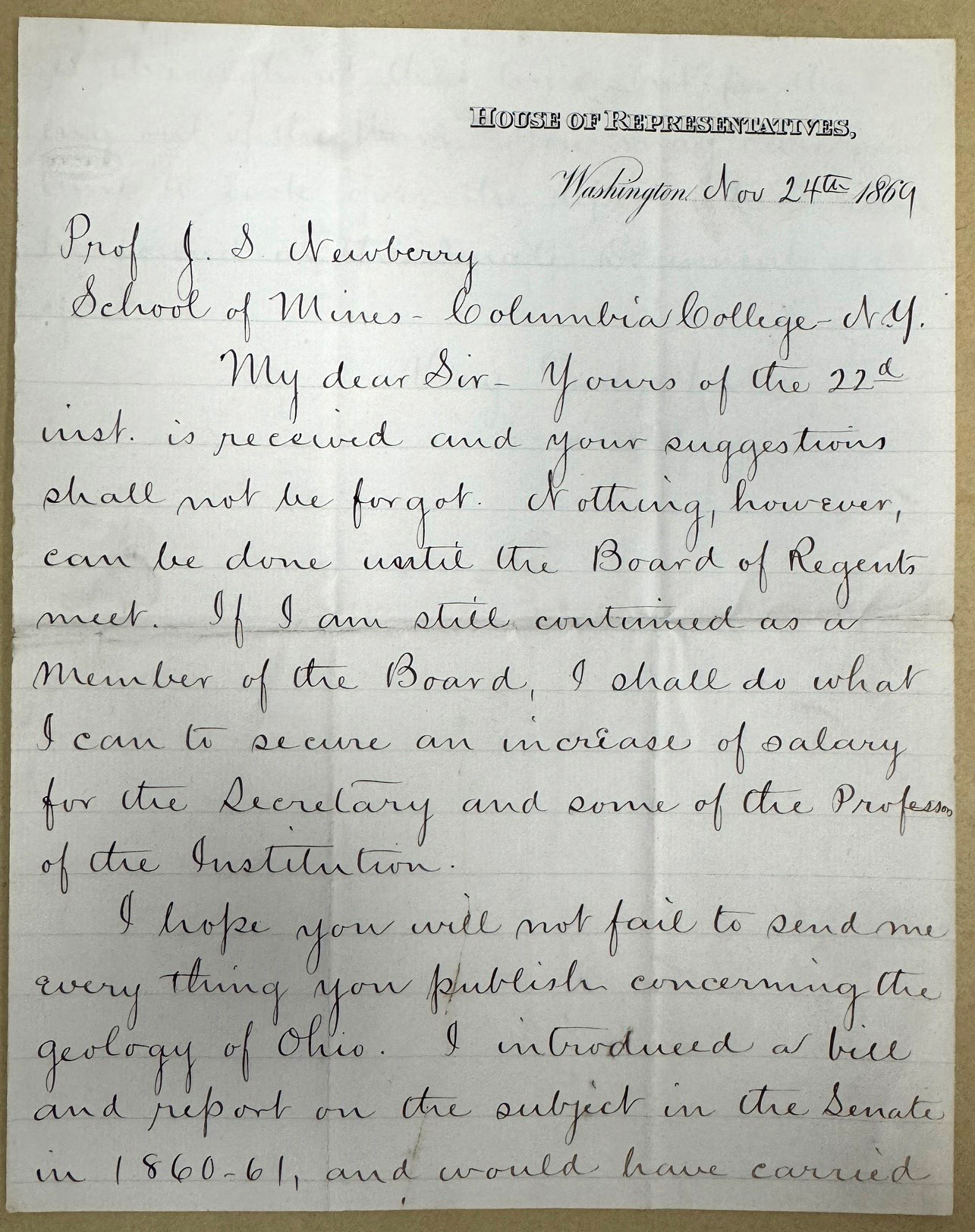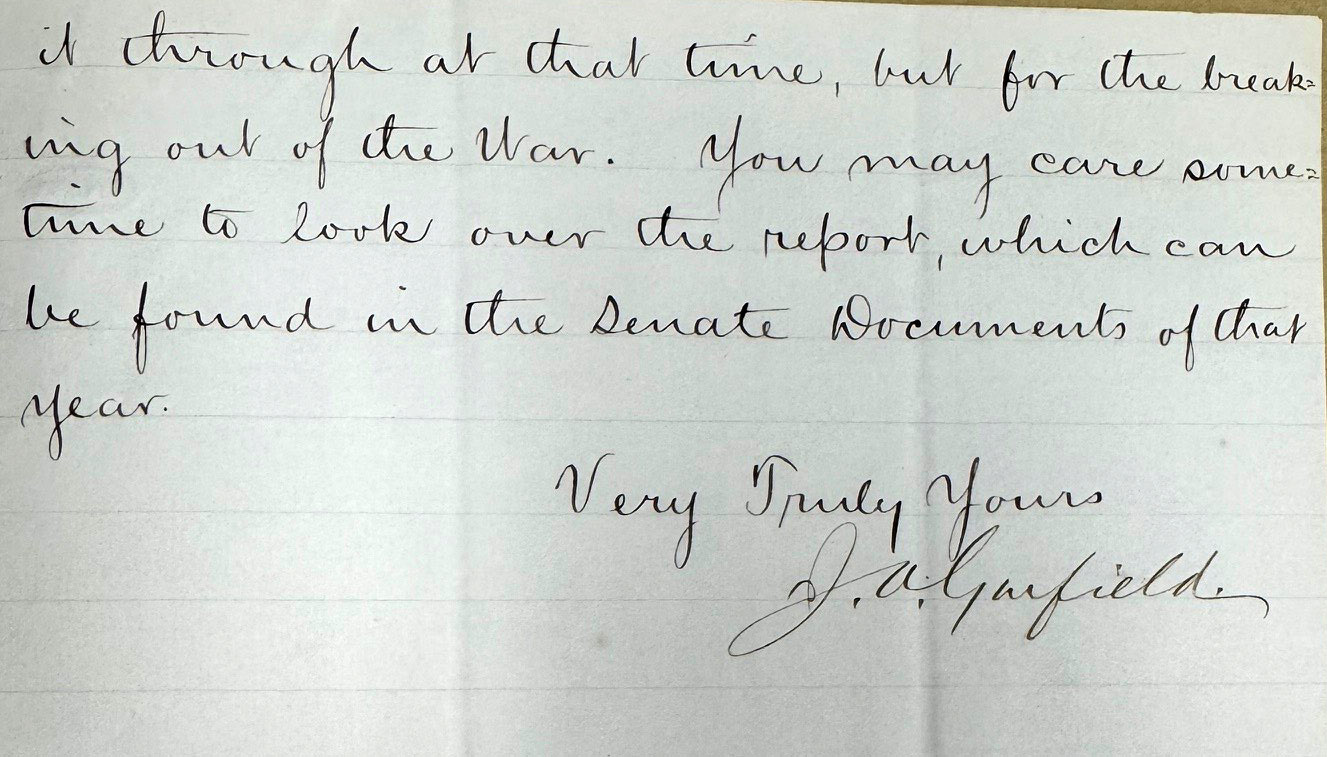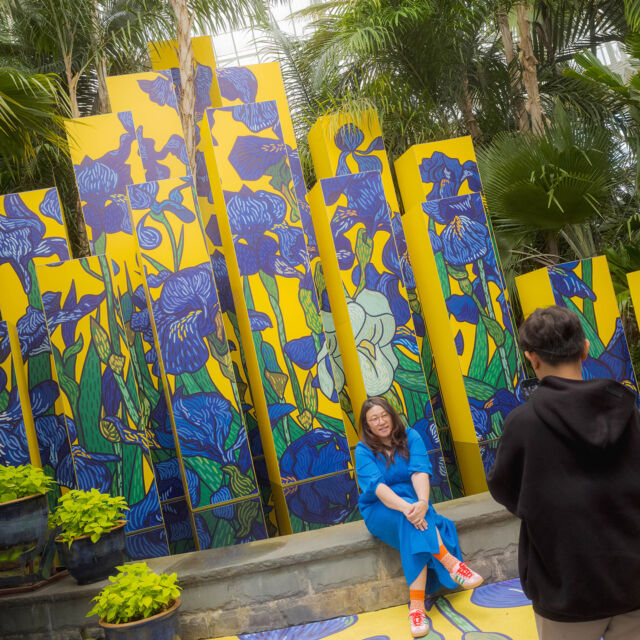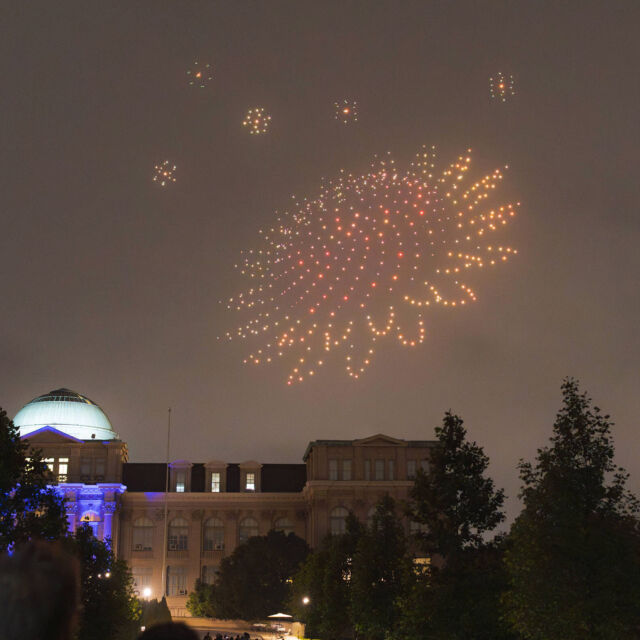A Presidential Puzzle
Zachary Rosalinsky is the Special Collections Catalog Librarian in the LuEsther T. Mertz Library of the New York Botanical Garden.
As the Special Collections Catalog Librarian at the New York Botanical Garden’s LuEsther T. Mertz Library, every so often an item crosses my desk that is historically important, extremely cool, and also quite frustrating. A manuscript from the Mertz Library Archive’s Small Collections with the call number “Small G:0020” was just such a document. The Archives Small Collections are a gathering of manuscripts—mostly letters—that are too varied to get their own collection designation, so we keep them together as one large miscellany. The items get individual cataloging so they and their contents are findable in the Mertz online catalog. I had many questions about this particular collection item, and I decided to find some answers.
The two most striking things about this manuscript occur at the top of the first page and at the end of the letter on the second page: namely, the letterhead reading “House of Representatives” in all caps and the letter’s signature, J.A. Garfield. This letter was sent by then-Representative and future U.S. President James Garfield to John Strong Newberry, professor of geology and paleontology at Columbia College’s School of Mines. In it, Garfield is responding to two earlier letters sent by Newberry. Give the letter a read for yourself below.
After inputting the normal data that I would always add to a catalog record (things like number of pages, page size, author of the item, and call number), manuscripts receive a summary of the contents. Many may wonder why we do not just transcribe the letter, but a summary can often be far more useful to researchers, this letter being a prime example. Letters by themselves lack important context that can be provided by a cataloger who has done their research and is familiar with the collection they are working on. In creating the summary and adding the subject headings for this manuscript, I ran into a number of questions that could not be answered by the document alone. Namely, I needed to know what Board of Regents Garfield was talking about and for whom Newberry wanted a pay raise. At the second tier of importance for me, I also wanted more information on the bill and report Garfield says he introduced to the Ohio State Senate.
Knowing that Newberry is most famous for being a professor at Columbia College (now Columbia University), I thought that, given Garfield’s reference to professors, that may simply be the institution in question. I reached out to the Archive there to see if they knew if Garfield had served on the Board of Trustees and merely mis-identified it as a Board of Regents in his letter. Meanwhile, I searched the digitized manuscripts in the Garfield Archives at the Library of Congress for the letter of Newberry’s that Garfield identifies as having been written on November 22 (“inst.” on the second line of the body of the letter is an abbreviation meaning “of this same month”). I found one, which gave me two names for the professors, but unfortunately one was extremely vague—just Henry—and the other was illegible to me. At that point, I asked the Mertz Library’s Reference Archivist, Ashley Aberg, if she had an idea as to what that name might be. Cataloging, while normally a solitary occupation, often does involve collaboration.
Having hit another wall, I updated Columbia’s archivist with the names to see if they had professors with names similar to these on staff at the School of Mines in 1869. They sent me a scan of the 1869 to 1870 School of Mines catalog, which confirmed that no names approaching the ones I was hunting down were employed at that time as professors. Seeing that the Library of Congress’ letter dated November 22 is actually a follow-up letter, I contacted their librarians as well to see if they knew where I might find the earlier letter, needing to contact them this time because I no longer had a date to sift through and the letter might have been sent at any point before November 22, 1869.
While waiting for this information, I wondered if there might be another institution that Newberry belonged to, which might have interested Garfield, and came across the New York Academy of Sciences. I contacted their archive as well to see if Garfield served on their Board.
Approaching the second-tier questions now, I contacted the Ohio History Connection archives to see if they knew anything about the bill and report Garfield says he introduced in the Ohio Senate. They responded with refreshing alacrity and I now had the bill and the title of the report, both of which I duly included in the catalog record I was creating.
At this point I heard back from the Library of Congress, which pointed me in the direction of the preceding letter, which had been dated March 3, 1869; good thing I did not end up searching through eight months of manuscripts! It was in this letter that I finally found the professors’ names—Henry and Baird—and the correct institution, the Smithsonian. I felt a bit silly not thinking of the Smithsonian Institution, given its importance and the relevance it might have had for a U.S. Congressman, but I was mostly thrilled to have solved the mysteries; a quick search online revealed that the first secretary of the Smithsonian Institution and his assistant secretary were, respectively, Joseph Henry and Spencer Fullerton Baird, and that James A. Garfield served as a member of the Smithsonian’s Board of Regents for many years. My record, which once had so many mysteries in it, now not only had accurate information, but had a depth of context that I never could have gotten from the single fairly short and sparse manuscript I needed to catalog.
I hope this gives you a glimpse into how much more cataloging entails than merely data entry, which is a common misperception. It is my hope that this record will expose this item, and the information contained within, to the wider research community; at the very least, the Mertz Library’s Garfield letter provides information, previously unknown, in correlation with the Library of Congress’ Newberry-Garfield correspondence. This item, and a great many more, are available for research at the LuEsther T. Mertz Library. To schedule an appointment, contact archives@nybg.org.
SUBSCRIBE
Enter your email address to subscribe to this blog and receive updates on new posts.













